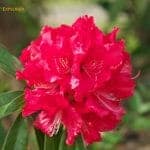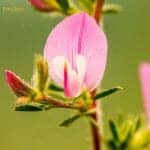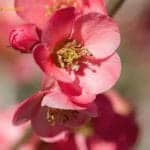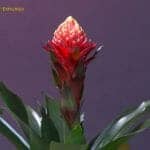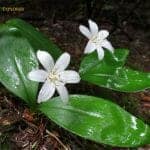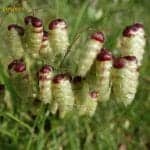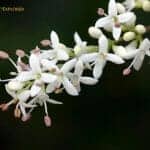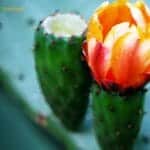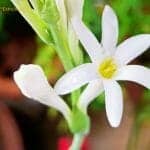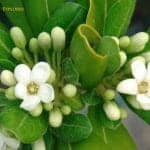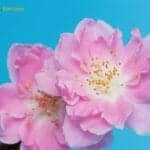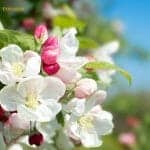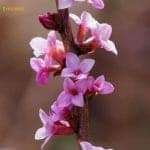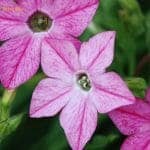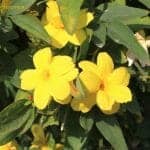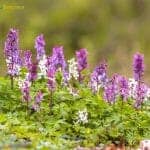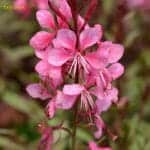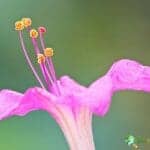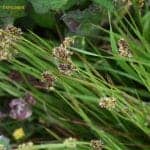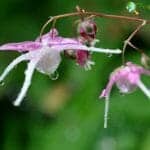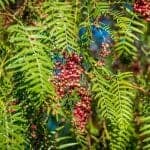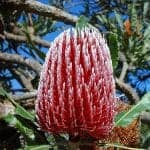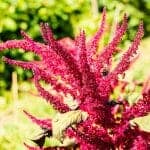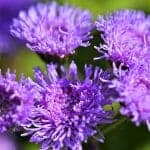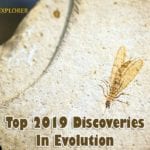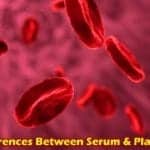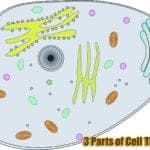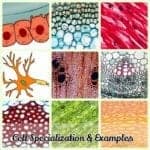april - search results
If you're not happy with the results, please do another search
Rhododendron
Rhododendron is the genus and common name for a diverse and large group of small trees and woody shrubs in the flowering Ericaceae family. There are over 1000 rhododendrons native to Australia, North America, Asia, and Europe. The trees can be evergreen or deciduous
Restharrow
Restharrow (Ononis repens) is a perennial woody plant in the family Fabaceae. It is commonly known as Creeping Restharrow and Common Restharrow. Restharrow has hairy stalks and small, ovate leaves with serrated edges. The leaflets are less than three times as long as they are wide.
Red Rover
The Red Rover Mum is a beautiful large-flowered mum flower that dramatically affects any flower arrangement. Fresh, bold, and classy are the words used to describe this distinctive flower. Colors range from red to yellow, brown to pink, and the flowering period runs from mid-summer to fall.
Quince
The quince (Cydonia oblonga) is the only member of the genus Cydonia in the Rosaceae family (including pears and apples). These Japanese trees have been cultivated by landscape architects for their showy pale pink flowers and other ornamental features.
Quesnelia
Quesnelia is a genus of flowering plants in the Bromeliaceae family, a subfamily of the Bromelioideae. The genus consists of about 20 species of plants that are native to southeastern and eastern Brazil. Quesnelia is a perfect landscaping bromeliad with its vibrant flower in various colors.
Queens Cup
Queen's Cup (Clintonia uniflora) is a perennial plant of the liliaceae (lily) family native to western North America's mountainous regions. There are 5 species of Clintonia, 1 in Asia and 4 in North America.
Quaking Grass
The quaking grass (Briza media) attracts attention in every garden with its dainty inflorescences. Also known as cowquake, quaking grass belongs to the Poaceae (grass) family. t is native to Europe, North America, and Asia Minor. There are between 22 and 31 species in the genus Briza.
Privet
Privet (Ligustrum vulgare), with its glossy dark green foliage, forms a dense living fence or privacy hedge. These plants can be deciduous, semi-evergreen, or evergreen, depending on the variety you choose and where you live. The genus includes around 50 species of upright, evergreen, or deciduous shrubs, which often form medium-sized to small trees and are native to Asia, North Africa, and Europe.
Prickly pear
The prickly pear, Opuntia ficus-indica, has established itself in different parts of the world where it is not native. In fact, it is so widespread that its original native habitat is unknown, although it is likely native to Mexico. Prickly pears can reach a height of 1.5 meters (5 feet) and can grow to a diameter of 4.5 meters (15 feet).
Purslane
Purslane (Portulaca grandiflora) is a heat and drought tolerant annual plant native to the hot, arid plains of Uruguay, Argentina, and southern Brazil. Purslane is among the 3 most important species of portulaca. It has several common names, including rock rose, the sun rose, Mexican rose, eleven o'clock, and rose moss.
Pompom Chrysanthemum
Pompom blooms are annual flowering plants better known as chrysanthemums. The flowers are known as pompoms because their fullness makes them look like the pompoms used by cheerleaders. Pompom flowers are native to China. Flowers are sometimes seen in ancient Chinese art.
Polianthes tuberosa
Polianthes tuberosa, commonly known as tuberose, is possibly native to Mexico. It's considered iconic and has a long cultural history dating back to pre-Columbian times. The Agave genus (Agavaceae) includes about 200 species.
Pittosporum
Pittosporum is one of many evergreen trees or shrubs primarily native to New Zealand and Australia, making up the Pittosporaceae family's Pittosporum genus. Also known as Australian laurel, Pittosporum is mainly planted as ornamental plants in temperate regions
Peach blossom
The common peach blossom (Prunus persica) is the genus Prunus fruit plant, which belongs to the Rosaceae family. The Prunus genus includes 430 different tree and shrub species. The peach blossom originates from northern and central China.
Painted Tongue
The relative of the petunia, the painted tongue (Salpiglossis sinuata), catches the eye with its spectacular trumpet-shaped blooms in shades of deep violet, gold, and magenta.
Order Buxales / Boxwood Flowers
The whole range of boxwood flowers belong to order Buxales. Order Buxales is the eudicot flowering plant consisting of evergreen shrubs or trees. Members of Buxales are usually monoecious with simple, non-sheathing, and estipulate leaves. Balearic box, Korean boxwood, Japanese Pachysandra, and Allegheny spurge are excellent garden flowers from this order.
Apple Blossom
For many nature lovers, apple blossoms (Malus coronaria) are the highlight of the year. This wild beauty with a captivating scent is found in Arkansas and Michigan. Apple blossoms have white and cherry-pink petals. The apple tree flowers are large; they grow with the leaves and are borne in sub-bellied umbels.
Mezereon
Mezereon (Daphne mezereum), commonly known as the February Daphne for its late winter flowering, is a small, semi-evergreen, deciduous shrub with an upright, bushy growth habit that usually grows 3 to 5 feet tall and wide. The fragrant pink to reddish-purple flowers (up to 1/2" wide each) bloom in stemless clusters (2 to 4 flowers per cluster).
Nicotiana
Discover the rich history and stunning beauty of Nicotiana species in Mexico, featuring night-blooming flowers, ancient rituals, and their enduring cultural significance.
Top 10 Immunology News of 2020
The immune system is one of the most complex and multi-layered systems of our body. Explore the top 10 discoveries in immunology for 2020 here.
Jessamine
Native to the Southeastern United States, Jessamine (Gelsemium sempervirens) is a large vine for the landscapes. Jessamine grows 20 ft or more when cultivated as a vine. The fragrant, golden yellow flowers cover the finely structured cascading foliage from February through April.
Hollowroot
The hollowroot plant enchants with delicate carpets of leaves, on which fragrant blooms in white and deep purple-pink open. The plant belongs to the Fumarioideae (fumitory) family. Hollowroot opens its slightly fragrant white to purple or dark pink blooms from March to April.
Bouvardia
Bouvardia (Bouvardia ternifolia) is a genus of vibrant, tubular flowers native to Mexico, with species like B. ternifolia showcasing brilliant scarlet to coral-red blooms. The flowers grow in small, elegant clusters that attract hummingbirds. Historically, Bouvardia has ties to colonial Mexico, where it was cultivated for ornamental gardens.
Gaura
Attract butterflies and other pollinators to your garden with Gaura's long stems, which are made of delicate flowers. It is a Mexican perennial herb that grows to a height of 15 to 48 inches. The flowers are available in pink, white, or a combination of the two colors.
Four O’ Clock
Four O'clock will delight both your eyes and your nose, with fragrant tubular flowers that come in a variety of patterns and colors. Often, you even get different colored flowers on the same plant. the flowers are tubular, red, pink, or white, up to 6.5 cm long and 3.5 cm wide with 5 to 6 stamens.
Field Wood-rush
The Field Wood-rush (Luzula campestris) is a common plant in green areas like meadows, grassy areas, and plains. The plant is a common European species and is occasionally found in North America. The brown flowers are produced on thin, brush-shaped central stems that can grow up to 6 inches long.
Farewell-To-Spring
Appropriately named, Farewell-To-Spring (Clarkia bottae) signals that the end of the spring bloom's peak. The Farewell-to-Spring bloom is bowl-shaped, pink to lavender, sometimes speckled with red, and flowers from late April to July (depending amount of rain and the timing).
Epimedium
A delightful woody addition, the Epimedium plant is part of a constantly growing family of highly-valued perennials. The Epimedium genus belongs to the Berberidaceae family with about 130 known varieties and species. It has large yellow/pale-pink spider-shaped flowers with a long spur (1 3/4" in diameter) appearing in spring bloom.
Dahlia
Dahlia is available in various shapes, colors, and sizes, which makes it popular with florists and gardeners. Dahlias, along with sunflowers and daisies, belong to the Asteraceae family. Although more than 20,000 species in this family, Dahlias, Mexico's national flower, has become one of the most popular competition flowers today.
California Pepper Berry
Although its name can be confusing as to its origins, the California Pepper Berry surprisingly originates from Peru. These pink berries aren't really used for pepper in yet another misnomer, but only for their decorative charm. The flowers of the California Pepper Tree are yellowish-white in color and grow profusely in hanging axillary clusters.
Banksia
Banksia is a genus of about 100 species in the Proteaceae plant family and is native to Australia and South Africa. These popular garden plants and Australian wildflowers are easily recognized by their characteristic fruity "cones" and buds as well as flower spikes.
Amaranthus hypochondriacus
Known commonly as Prince's Feather or simply Amaranth, Amaranthus hypochondriacus is a striking ornamental and edible plant native to Mexico. It features bold, upright spikes filled with tiny magenta to red flowers and large, broad green leaves. Amaranth holds deep cultural significance in Mexico.
Ageratum
Ageratum (Ageratum houstonianum) is a soft, fluffy-looking flower native to Mexico and Central America. It’s prized for its small, fuzzy blooms that come mostly in shades of blue, lavender, pink, or white. The plant grows low to the ground and produces dense, colorful clusters perfect for borders and containers.
Top 10 Genetics News of 2020
Genetics in 2020 also came to the forefront of science because tracing the virus variants was crucial. Here are the top 10 genetics news of 2020 reviewed.
Top 10 Evolutionary Biology News of 2020
Despite the isolation enforced by the pandemic, research in evolutionary biology thrived in 2020. Here are the top 10 evolutionary biology news of 2020.
Top Cell Biology News of 2020 – A Round Up
The year 2020 was the time of an unprecedented health crisis. Understanding the inner body workings has become even more crucial than ever. Here are top 10 cell biology of 2020.
Top 10 Biotechnology News of 2020
Despite the difficulties the global lockdown created for science, the specialists in biotechnology managed to emerge from this situation with honor. Here are top 10 biotechnology news of 2020.
6 Best Indoor Vegetable Garden Systems Reviews
There is nothing better than having fresh vegetables from the garden when you want them. The best indoor vegetable garden system will help you make it happen!
Top 10 Botany News in 2020
If we look at the current discoveries in Botany, it is clear that Plant Science is actually thriving now. Here are top 10 botany news in 2020.
Top 2019 Discoveries in Evolution
The 2019 discoveries in evolution show that the new approaches to traditional research areas such as paleobiology and the use of modern technology can offer unique, previously unimaginable insights.
Top 10 Cell Biology Discoveries in 2019
In 2019 researchers managed to decipher multiple complex mechanisms of the body cells & functions. Here are the top 10 cell biology discoveries in 2019.
Top 10 Biotechnology Discoveries in 2019
Here are the top 10 best biotechnology discoveries in 2019 - this includes the production of enzymes outside of the cell and manipulate bacteria to consume CO2.
Top 15 Biochemistry Discoveries of 2019
Modern methods of analysis & research have significantly changed the way biochemical studies operate. Here are the top 15 biochemistry discoveries in 2019.
Top 15 Anatomy & Physiology News In 2019
The year 2019 was filled with amazing discoveries and innovations in Anatomy. Here are the top 15 anatomy news in 2019 from around the world.
Top 25 Integumentary System Facts (Skin Fun Facts)
The skin is the human body’s first line of defense against microorganisms, parasites, and the environment. Here are the top 25 integumentary system facts.
Top 25 Fun Facts About The Skeletal System
The Skeletal system forms the human skeleton that supports the body and allows for movement. Explore the top 25 Fun Facts about the human skeletal system here.
Top 25 Most Recent Genetic Discoveries in 2018
The year 2018 has seen another ground-breaking advancement year in the field of Genetics. In this article, we will explore the top 25 genetics discoveries in 2018.
Top 14 Differences Between Serum and Plasma & Similarities
Blood contains two other parts – plasma and serum. It is quite common to come across these two terms frequently and be confused by the two. However, both are vital components of the blood. Explore top 14 key difference between serum and plasma and also similarities between them in this page.
Elephant Evolution
Elephant Evolution: Elephants evolved over a period of millions of years. It took 60 million years for elephants to evolve their long tusks and trunks. The earliest ancestors of elephants looked nothing like elephants. By evolution, bodies of animals became larger and longer. Explore the ancestors of elephants here.
Explore What Is Cell Theory & Parts of Cell Theory
All living organisms on the planet are made up of tiny individual units called cells. Without these units, living organisms cannot function the way they do now. In this article, we will explore the aspects and 3 parts of cell theory, its rivaled history, and many versions, as well as the exceptions to cell theory.
Top 17 Stem Cell Research Pros and Cons
The human body is made up of trillions of cells that are the foundation for different tissue and organ systems. Stem cell therapy involves isolating stem cells from their respective niche and using them to treat a disorder, area of injury or damaged tissue. Let's explore top 17 stem cell research pros and cons here.
Can Animals Have Down Syndrome?
Animals and humans can share a host of different diseases and illnesses. Although they may manifest and present differently in the two, animals, too, can acquire genetic disorders. Can animals have Down syndrome? Explore reports on animals having Down syndrome with good illustrations.
Top 38 Fun Facts About The Nervous System
The nervous system is a complicated web of nerve fibers and cells that run to & from the brain. Here are the top 38 fun facts about the nervous system.
Exploring Your Genes: The Best DNA Testing Service
Looking for the best DNA testing service for tracing ancestry? Learn different types of DNA testing and the best DNA testing service to explore your genes.
What Do Polar Bears Eat?
Polar bears are magnificent creatures of the far north and are often termed as sea bears. Explore what do polar bears eat and hunting patterns & more.
Cell Specialization: Mechanisms, Examples, & Significance
Cell specialization is the process by which cells evolve to cells with specific functions. Let's explore its mechanisms, examples and significance here.
Recombinant Proteins
Recombinant proteins are translated products of the expression of recombinant DNA in living cells. Learn its definition, history, two methods & applications.
Pinocytosis: The Science of Cell Drinking
Pinocytosis is the process by which cells takes in extracellular fluid & dissolved solutes. Learn the difference between Phagocytosis and Pinocytosis here.
Explore Ecological Pyramid: 3 Major Types and Limitations
Ecological pyramids serve as the representation of the relationship among organisms in an ecosystem. Learn their overview, 3 major types & limitations here.
The Histology of the Pseudostratified Columnar Epithelium
The epithelium, the outermost layer of the body surface, consists of a layer (or layers) of similar cells that are bound closely together. Learn about the pseudostratified columnar epithelium (anatomy, types & functions) and find out what makes it unique from other epithelia in the body.


